Understanding the hospitality of Khorasanians with Mashhadi shell
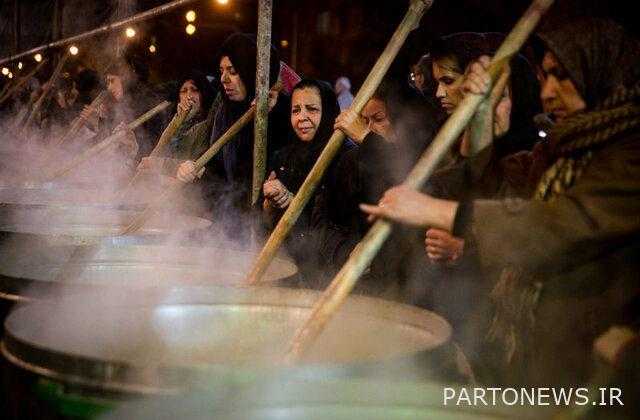
The tradition of cooking Mashhadi shells has been going on in Mashhad for many years and on special days. Sheleh is a traditional and unique food that has special methods for cooking and in fact it can be said that it is prepared and cooked based on special customs and traditions. The uniqueness of this food caused the tradition of Mashhadi Sheleh cooking to be registered in the National Spiritual Heritage List at the beginning of the 1990s in the sixth national meeting of the Policy Council for the Registration of Antiquities.
In an interview with ISNA, Faramarz Saber Moghaddam, an expert from the General Directorate of Cultural Heritage, Tourism and Handicrafts of Khorasan Razavi, said about the reputation of Sheleh and its national registration: I met the joint to prepare the shell. Meat is the main ingredient of this food and the people of Mashhad strongly believe that flakes should be very meaty. That is why they talk more about being meaty and so-called stretching after leaving the parliament.
He added: “The tail is the next required ingredient of this food, which should not be too much, because it may affect the taste of the flakes.” Semi-rice is also used to cook this dish so that the flakes become mild. Oatmeal, white beans, pinto beans, chickpeas, mung beans, chickpeas, oil, paste, onion, except Indian roots are other legumes needed to cook this food. In cooking this food, spices such as ginger, cinnamon, pepper, green cardamom, turmeric and saffron are also used for minced meat and salt.
To cook this famous dish, the researchers first soak the beans for 12 hours and then heat them with the chopped meat and onion until they are completely cooked. After cooking, the meats are shredded and mixed with the beans cooked in a large pot until the ingredients are completely crushed and soft.
Saber Moghaddam continued: As it was said, meat is very important in cooking Mashhadi noodles, the cooks use mutton, beef or beef and during cooking, they constantly mix the ingredients with a whisk. Kamcheh is related to cooking Mashhadi shell and Chambeh is related to Halim. Some people confuse this with mentioning the two instead. The movement is not rotary and takes place from top to bottom of the pot. Since this is a wooden stick that is connected to another piece of wood at the top of the boiler, vertical movement must be done so that the materials inside the boiler are completely mixed.
“When this food is cooked, they put fire coals on top of the pots,” he said. Previously, when cooking this food was done by large logs, they had to use hot coals instead, but now, with the advancement of technology and placing a gas flame on the stove, they regulate the heat at the top and bottom of the food. When serving food, stuffing is poured on the flakes, which complements this unique food.
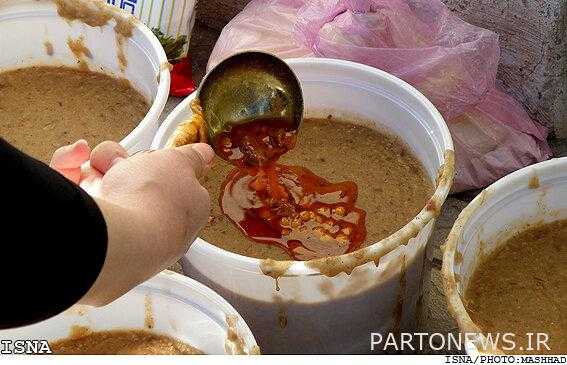
Mashhadi shell is an evolved example of cooking oatmeal
An expert from the General Directorate of Cultural Heritage, Tourism and Handicrafts pointed out the history and antiquity of this food: For food and food such as historical monuments, no specific date can be considered. Some of the intangible heritage is clear where it came from and in what direction it is moving, but what is different about Mashhad Sheleh is the religious nature of Mashhad.
Saber Moghaddam added: “In fact, since cooking” bulgur “as a vow was common in religious cities, it can be said that sheleh is a more complete and developed example of bulgur.” This food has been used in the past for charity among Muslims as well as vows. Also, in some traditions and rituals, such as asking for rain or thanksgiving, the harvest of agricultural products has been performed, especially in the south of Khorasan and Sistan. For this reason, it can be said that the evolved Mashhadi shell is the same cereal to which meat and other ingredients have been added today.
He said: “Since we know that intangible heritage is associated with evolution in every period, Mashhad Sheleh is no exception to this issue and it can be said that the process of cooking and serving Sheleh today in Mashhad started from bulgur and at a certain time became Mahshadi Sheleh.” Has been.
Safavid period The beginning of Mashhad’s reception of pilgrims with shells
The researcher explained: “Since the city of Mashhad has been a place of pilgrimage from ancient times to the present day, when caravans enter the city, some pilgrims and travelers have always welcomed them with food such as Shelah.” It has been before and the people of Mashhad have long believed in the pilgrims of the eighth Imam (AS) for a long time, this period can be considered as the beginning of the reception with Mashhadi shells.
Saber Moghaddam continued: “We all know that cultures are affected from far and near, so travelers and pilgrims who traveled to Mashhad with caravans in ancient times, depending on their beliefs and culture, influenced the Mashhad shell, and these effects caused Until the contents of this food are changed and various other ingredients are added to the shell.
Unique food stream in Khorasan Razavi
He said: “Of course, it should be said that the economic prosperity created in Mashhad due to the presence of pilgrims in this city has been effective in the changes, especially the addition of meat to it.” Finally, according to studies, Mashhadi noodles are not cooked in any other region except Khorasan Razavi province, unless Mashhadi chef is used in other urban ceremonies.
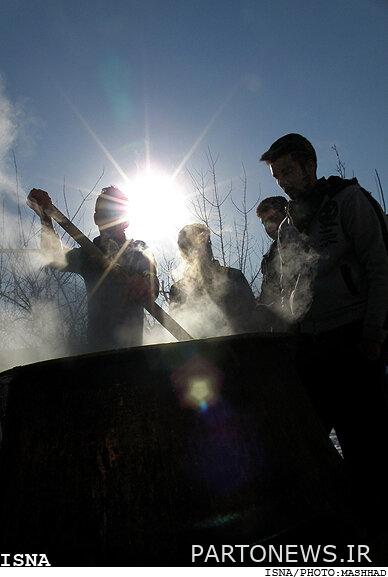
“We know that when we want to record intangible heritage, we have to look for that element or elements of its heritage,” the researcher explained of the beliefs and customs associated with this food. The inherited elements of this food are the same beliefs that are done before and even after cooking. A cook who believes that he performs ablution while cooking noodles, especially during Muharram and Safar, when there is a special spirituality for cooking this food, because he knows that this is a special and spiritual act. The cook starts cooking in the name of God, and all the people who help the cook in this way do this by pouring any ingredients into the pot, mentioning Salawat.
Saber Moghaddam stated: Another belief of the founders of Mashhadi Shelah cooking is that after entertaining the guests, they distribute a part of Sheleh among the poor and needy. Also, those who have a vow or their vow is fulfilled, must accept all or part of the meat required for the following year, and at the end of the meal at the table, pray for the sponsor of cooking the flakes and his dead.
The vows of Shelah are mostly made in the name of the Imams
He added: The vows are mostly made in the name of the Imams, including Hazrat Fatima (PBUH), Hazrat Ali Asghar and Imam Zaman (AS), which should be rooted in the love of the Shiites for the ruler of the martyrs, Imam Hussein (AS) in Commented. Mashhad Sheleh Baking is spontaneously going through this path from the past. It has been seen that if the owner of the parliament does not have the amount needed to cook the noodles, other founders enter the arena and the votive cooking is formed with the participation of others.
The cultural heritage researcher said: “The people of Mashhad believe that if a person tries to cook flakes, his needs and desires will be met, so even if it is a small amount, they try to make flakes to satisfy their needs and opinions.”
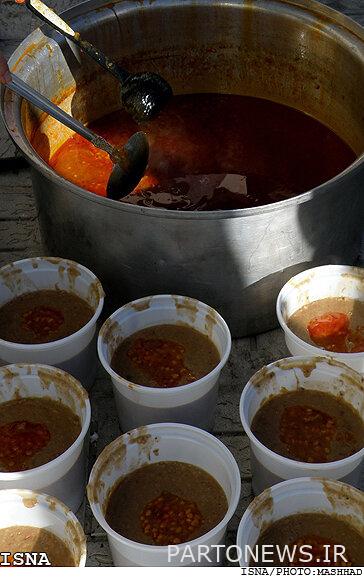
Saber Moghaddam stated: Cooking and serving shale in Mashhad has been done for a long time during the last decade of Safar, Ashura and Tasua, Arbaeen and the anniversary of the martyrdom of Imam Reza (AS) as a vow with special customs and rituals. A group of benefactors and lovers of the Ahl al-Bayt (AS) have always been present in the cooking of flakes, and before the table is spread, mourning, breastfeeding and fasting are performed in the presence of mourners.
Shelah is more commonly known as Muharram and Safar vows
He continued: It should also be said that Mashhadi shell is more known as Muharram and zero vows and is not an invitation. The reception with Mashhadi shell is mostly done in public places such as Hosseiniyahs, mosques and in the house of the founders, and it is a testimony to the hospitality of Mashhadis and the reception of various groups, including the neighbors and pilgrims of Hazrat Reza (AS).
The cultural heritage expert added: During the days of mourning, queues are formed to receive votive offerings with a collection of different ethnicities and dialects from most parts of Iran who come to Mashhad to participate in the ceremony; Pilgrims consider this food a blessing for themselves and their families.
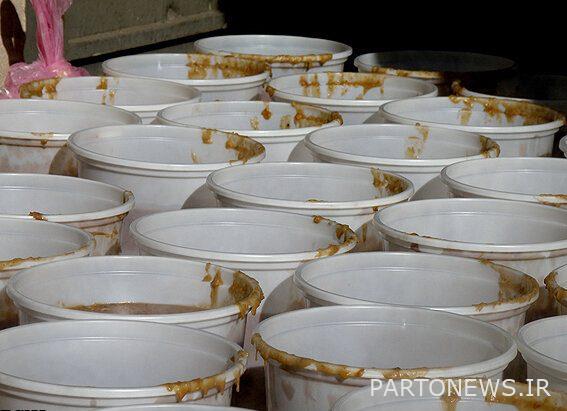
Keeping an important vow alive is the goal of the national registration of Mashhad Sheleh
Saber Moghaddam said: “Finally, we should know that the purpose of registering Mashhadi shell as an intangible spiritual heritage is to keep alive an important and historical vow in the days of Muharram and Safar. So that its true flavor will always remain.

